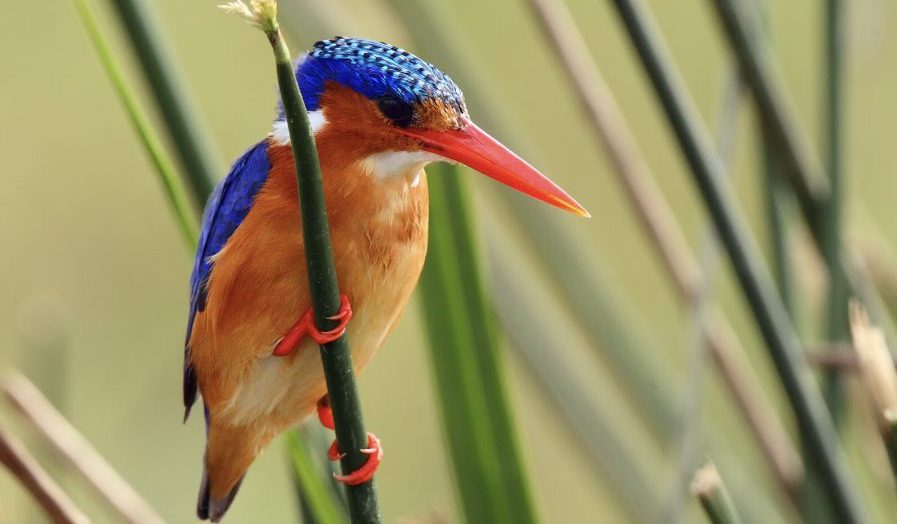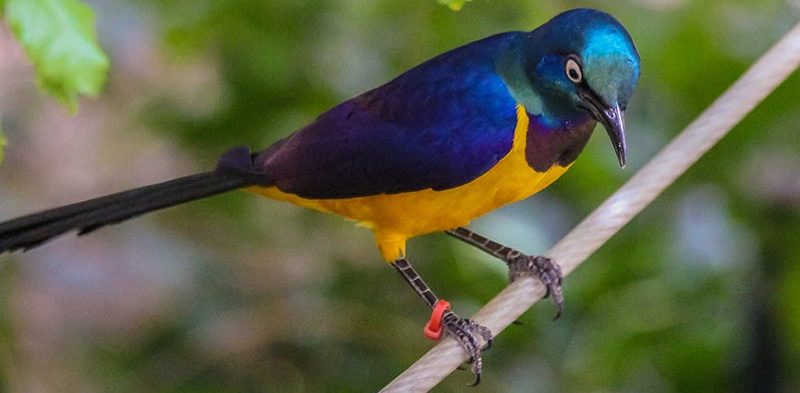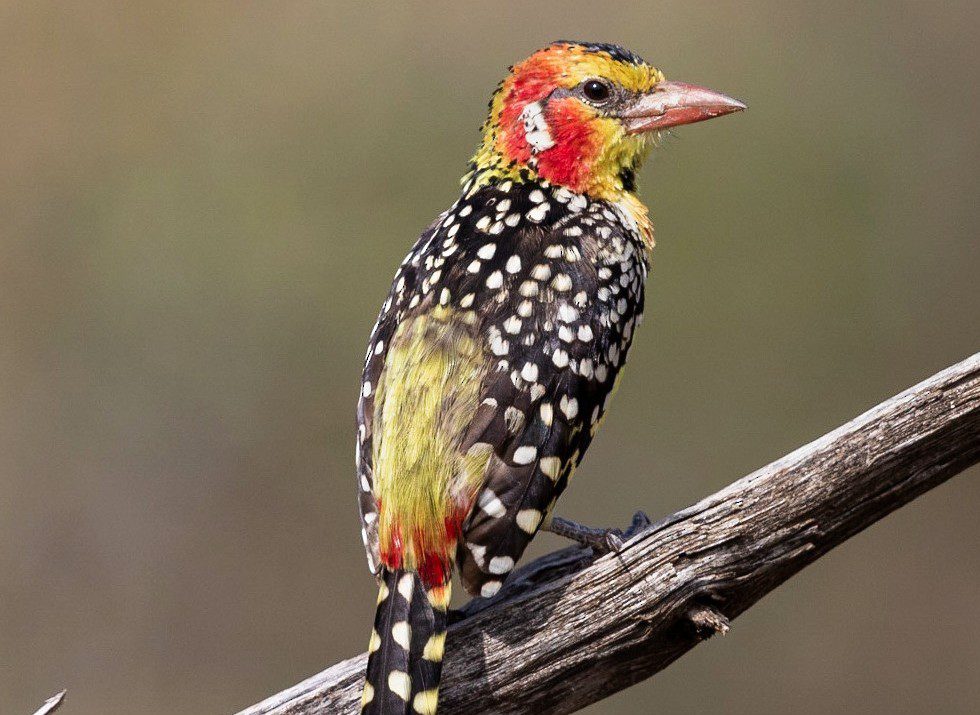Birding Safaris in East Africa
Birding safaris in East Africa are a worthwhile adventure. East Africa has wild and untouched landscapes, golden savannahs, luscious forests, white-sand tropical beaches, and incredible wildlife.
Embark on an extraordinary journey through East Africa, the epitome of birding excellence and a paradise for enthusiasts worldwide. With over 1,488 bird species gracing its skies and landscapes, this region holds 12% of the world’s avian diversity, making it a haven for birdwatchers and nature lovers. Uganda hosts 1090 species, Kenya hosts 1157 bird species, Tanzania hosts 1156 bird species, and Rwanda hosts 750 bird species.
Our Birding Safaris in East Africa promise an unforgettable adventure, where every step unveils a new spectacle of winged wonders. Traverse the diverse ecosystems of savannas, forests, wetlands, and mountains, each harboring a unique array of birdlife waiting to be discovered.
Join us on our Birding Safaris in East Africa, where every dawn brings a symphony of birdsong and every dusk paints the sky with hues of wonder. Let the magic of this birding paradise captivate your soul and leave you with memories to treasure for a lifetime.

Birding Safaris in East Africa- Uganda
Uganda is one of the top Birding Safaris in East Africa. It is the richest African Bird Watching Destination with about 1090 bird species. 50% of all Africa’s bird species are in Uganda, that’s 11% of the World’s Bird Species.
Uganda is a “Hidden Eden and a wonderland for birds,” as described by Sir Frederick Jackson. Uganda has only 1 endemic bird species, the Fox Weaver, which is found in the Eastern part of Uganda. There are also 25 Albertine Rift Endemic Bird species.
The Important Birding Areas of Uganda- Birding Safaris in East Africa
Mabamba Bay Wetland is on the edge of Lake Victoria.
A canoe ride through the Mabamba Bay Wetland offers sightings of the rare Shoebill Stork.
Bwindi Impenetrable Park – Buhoma and Ruhija sector.
The park offers some of the finest Montane Forest bird-watching experiences in Africa. There are 350 bird species, 24 are Albertine Rift Endemics, of which 14 are not recorded anywhere else in Uganda.
The bird species include: Grauer’s broadbill, Fraser’s eagle-owl, Chapin’s flycatcher, white-browed crombec, Neumann’s warbler, black-faced Prinia, and handsome Francolin.
Queen Elizabeth National Park
The park is a birders’ haven and has about 600 bird species. Birding is done in the Northern part (Kasenyi Plains) and the Southern part of the park ( Ishasha Sector).
The park’s birding spots are at the Kazinga Channel, Mweya Peninsula, Maramagambo Forest, Kasenyi Plains, Katwe Salt Lake, Lake Kikorongo, and Ishasha Sector.
Bird species include Grey Crowned Heron, Saddle Billed Stork, Martial Eagle, Grey Crowned Crane, African Jacana, and Blue-headed Bee-eater, among others.
Murchison Falls National Park.
Uganda’s oldest and largest National Park is home to over 450 bird species. Birding is done on a game drive, nature walk, or boat trip.
Bird species include White-crested Turaco, Double-toothed Barbet, and Red-throated Bee-eater, among others.
Budongo Forest in Murchison Falls National Park.
Budongo Forest comprises Kaniyo Pabidi, the Royal Mile, and the Busingiro areas. It lies at the edge of the Albertine Rift Valley and is home to about 360 bird species.
These include Nahan’s francolin, Cassin’s spinetail, Chestnut-capped Flycatcher, and African Dwarf Kingfisher, among others.
Mgahinga Gorilla National Park.
The park is one of the smallest in Uganda. It has about 180 bird species, of which some are Albertine Rift endemics, as it borders Rwanda and the DR. Congo.
The bird species include: the Kivu ground thrush, Handsome Francolin, and Dusky Crimsonwing, among others.
Semuliki National Park.
The park is in the Albertine Rift Area and hosts Guinea-Congo biome species in its lowland forest. There is a record of 441 species in its riverine, forest, and grassland habitats.
The bird species include the Congo serpent-eagle and Maxwell’s Black Weaver among others.
Kibale National Park and Bigodi Wetland Sanctuary.
The park hosts 375 bird species, including 6 endemics to the Albertine Rift. The bird species include: Green-breasted Pitta, Brown-chested Alethe, Blue-headed Sunbird, Black-capped Apalis, Collared Apalis, Dusky crimsoning, Purple-breasted Sunbird, and Red-faced woodland warbler.
The Bigodi wetland has 138 bird species recorded, such as the speckled tinkerbird, speckle-breasted woodpecker, and white-spotted flufftail, among others.
Lake Mburo National Park
The park is home to 350 bird species, and birding can be done near the lake swamps at Warukiri and Rwonyo. Other habitats include dry hillsides, rocky outcrops, and the savannah.
Bird species along the woodlands include Red-faced Barbet and Nubian Woodpecker, among others.
Rwenzori Mountains National Park
The park has 220 bird species, including 19 Albertine Rift endemics. Birding within the forest zone has sightings of the Rwenzori Turaco, Blue-headed Sunbird, and Golden-winged Sunbird, among others.
Birding Safaris in East Africa- Kenya.
Kenya has 1157 bird species, 68 Important Bird Areas (IBAs) in Kenya, 11 are endemic, and 4 have been introduced by humans, making it a great spot for Birding.

Important Birding Areas in Kenya- Birding Safaris in East Africa.
Nairobi National Park
The park hosts a range of habitats including open grasslands, lightly wooded plains, rocky valleys, seasonal wetlands, dams, forest-lined rivers and streams, and montane forests.
Bird species include the Secretary bird, Rosy-breasted Longclaw, Superb Starling, Lilac-breasted Roller, Martial Eagle, Saddle-billed Stork, Grey Crowned Crane, and Southern ground hornbill, among others.
Samburu & Buffalo Springs National Reserve
The reserve hosts about 400 species of birds in its dry environment. The Ewaso Ny’iro River has riverine woodland that hosts about. Shining Sunbird, Verreaux’s Eagle, Golden-breasted Starling, Reticulated Giraffe, Grevy’s Zebra, and Beisa Oryx, among others.
Lake Naivasha
The Rift Valley Lake hosts about 350 bird species, among which are the Great White Pelican, Saddle-billed Stork, Goliath Heron, and Giant Kingfisher, among others.
Kinangop Plateau Grasslands
The plateau hosts about 165 bird species recorded in the Murungaru area of Kinango, with the Endemic Sharpe’s Longclaw among others.
Lake Baringo
The lake hosts about 500 species, with four globally threatened species, namely, the Lesser Flamingo, Pallid Harrier, Madagascar Pond-Heron, and the Lesser Kestrel, among others.
Lake Bogoria Reserve
The Rift Valley Lake Reserve is a stunning soda lake that is dotted with steam jets, natural hot springs, and geysers, home to the lesser flamingo. It hosts about 487 bird species, among which are the African Fish Eagle, Yellow-billed Hornbill, Verreaux’s Eagle, Slender-tailed Nightjar, and Greater Flamingo, among others.
Lake Nakuru
This rift valley lake is a birder’s paradise and Ramsar site that boasts up to 450 species, with five globally threatened species, the Greater Spotted Eagle, Madagascar Pond-Heron, Lesser Flamingo, Pallid Harrier, and the Grey-crested Helmet-shrike among others.
Kakamega forest
The forest is part of the ancient Guineo-Congolian forest and hosts about 450 species, among which are the Turner’s Eremomela, beautiful wattle-eyes, Great Blue Turaco, and Ross’s Turaco, among others.
Kisumu Impala Sanctuary.
The sanctuary hosts over 115 bird species.
Araboke Sokoke Forest
The forest hosts about 230 bird species, among which are the Sokoke Scops Owl, Crested Guineafowl, and Fisher’s Turaco, among others.
Hell’s Gate National Park
The park hosts about 100 bird species, among which are the Verreaux’s Eagle, Black-headed Oriole, and Rüppell’s Vulture, among others.
Masai Mara National Reserve
The Mara hosts over 550 species recorded, including 12 species of Cisticola and 53 birds of prey. Look out for the Rosy-breasted Longclaw, Secretary bird, Kori Bustard, and Southern Ground Hornbill among others.
Mount Kenya
Mt. Kenya hosts species of the Afrotropical Highlands biome, which include Violet-backed Starlings, Green Pigeon & Meyer’s Parrot, Double-toothed Barbet, and Spot-flanked Barbet among others.
Tsavo East and West National Park
Tsavo National Park is characterized by rocky bushes, scrubland, open savannah grassland, Acacia woodlands, riverine vegetation, forests, and others.
The park hosts 500 recorded bird species that include White-headed Mousebirds, Shelly’s Starling, Red-winged Lark, Bateleur, Martial Eagle, Taita White-eye, Eastern Paradise Whydah, Taita Thrush, Taita Apalis, among others.
Tsavo West species include Golden-breasted and Fischer’s Starling, Grasshopper Buzzard, Friedmann’s and Singing Bush Lark, Somali Bee-eater, Pringle’s Puffback, Tsavo Sunbird, Taveta-golden Weaver, Common Whitethroat, Brown-breasted Barbet, and Quail Plover.
Birding Safaris in East Africa – Tanzania
There are 22 bird species endemic and thus unique to Tanzania, and a further 43 near-endemic birds that are restricted to Tanzania and neighboring countries like Kenya and Uganda.
Important Birding Areas in Tanzania- Birding Safaris in East Africa.
Serengeti National Park
The park boasts over 500 bird species, including its most iconic species, grey-throated spurfowl, Fischer’s lovebird, Schalow’s wheatear, red-throated tit, rufous-tailed weaver, grey-crested helmet shrike, and Schalow’s turaco among others.
Ngorongoro National Park
The park boasts over 500 bird species, among which are the Lesser Kestrel, the European swallow, the European bee-eater, the Northern Wheatear, the European roller, the Pallid Harrier, the Caspian Lapwing, and the Montagu’s Harrier.
Other species include the Fan-tailed widowbird, Greater flamingo, Hartlaub’s turaco, Hildebrandt’s spurfowl, Hildebrandt’s starling, Jackson’s widowbird, rufous sparrow, Kori bustard, and Livingstone turaco, among others.
Arusha National Park
The park is inhabited by over 400 different migrant and resident bird species. The presence of seven Momella Lakes and Mt. Meru makes the park a great spot for birding.
Bird species include Crowned Hawk-Eagle, Cinnamon-chested Bee-eater, and splendid songster Rueppell’s Robin-Chat, Brown Woodland-Warbler, Red-fronted, and Black-throated Barbets, Red-throated Tit, Slate-colored Boubou, and Nubian Woodpecker among others.
Lake Manyara National Park
Lake Manyara National Park is a rift valley lake comprising grassland, acacia woodland, forests, and Montane shrubbery. The Park has over 400 bird species, including Eurasian migrant birds, acacia-associated birds, raptors, and 3 endangered Tanzanian species, which are the Rufous-tailed weaver, Ashy starlings, and Black-collared Lovebird.
Bird species include the Crowned Plover, Grey Crowned Crane, Fischer’s Sparrow Lark, Two-banded courser, and the Black-faced Sandgrouse.
Lake Manyara forest bird species include the Silvery-cheeked Hornbill, Narina Trogon, Crowned Hornbill, Schalow’s Turaco, Emerald Cuckoo, Crowned Eagle, and ground-dwelling Crested Guineafowl among others.
Tarangire National Park
The park boasts 550 bird species, the highest count of any Tanzanian park. There are three endangered bird species which are the Rufous-tailed weaver, the Ashy starling, and the Yellow-collared Lovebird.
The swampy floodplains in Tarangire’s southern and eastern parts are important breeding grounds for the Eurasian migrants. The woodlands are inhabited by Hoopoes, Hornbills, White-bellied go-away birds, and Brown parrots.
The hills in the Tarangire National Park boast over 50 raptor species such as the Bateleur eagles, the Steppe Eagles, the giant Lappet-faced Vultures, and the tiny Pigmy Falcon.
Kilimanjaro National Park
This is the world’s tallest freestanding mountain, the summit of which is 5,895 meters (19,341 feet) above sea level. Highland species here include Hartlaub’s Turaco, Schalow’s Turaco, the Violet-Crested Turaco, the Silvery-Cheeked Hornbill, Trumpeter Hornbill, African Emerald Cuckoo, Klaas’s Cuckoo, African Pygmy Kingfishers, Malachite Kingfisher, the Cinnamon-Chested Bee-Eater, and African Pitta, among others.
Ruaha National Park
The park boasts over 450 different bird species along the river valley and Miombo woodlands. Endemic species recorded include the Ashy Starling and the Yellow-collared Lovebird.
Bird species of the Park are the Ruaha Redbilled Crested barbet, Dickinson’s kestrel, Pale-billed hornbill, Violet-crested turaco, Racket-tailed roller, Yellow-mantled widowbird, Violet-backed starling, and Green wood-hoopoe among others.
Birding Safaris in East Africa – Rwanda
Rwanda and associated habitats that harbor the Albertine Rift Endemic Bird Area (EBA). There are 8 birding areas in Rwanda (Important Birding Areas (IBAs) found in Volcanoes, Akagera, and Nyungwe, Gishwati-Mukura National Park, and then in Akanyaru wetlands, Nyabarongo wetlands, Umusambi Village, and Rugezi Swamp.
Rwanda has about 750 bird species, of which 29 are Albertine Rift Endemics.
Though there are no birds endemic exclusively to Rwanda, it accounts for most of the Albertine Rift Endemic bird species (44), 27 of which are found in Nyungwe Forest alone.
The Important Birding Areas in Rwanda- Birding Safaris in East Africa.
Volcanoes National Park.
The park has over 200 bird species, of which 17 bird species are endemic to the Volcanoes in the Virunga ranges of the mountains.
Look out for the Archer’s ground robin, Grauer’s rush warbler, Cinnamon bracken warbler, Black and White mannikin, and Rwenzori batis among others.
Gishwati-Mukura National Park
This is Rwanda’s newest national park, located in western Rwanda above Lake Kivu. The forests hold good birdlife, Gishwati, 232 species, and Mukura, 163 species, including several Albertine Rift Endemics and forest specialists.
Bird species include the Regal Sunbird, Grauer’s swamp warbler, Ruwenzori Batis, Woodhoopoe, Purple-breasted Sunbird, Martial Eagle, Strange Weaver, Grey Crowned Crane, and Dusky Crimsonwing, among others.
Akagera National Park
The park boasts about 480 bird species living in savannah and woodland areas, with 100 species endemic to the park. Look out for these specials: Red-faced Barbet, Sousa’s Shrike, White-collared Oliveback, and Ruaha Chat, among others.
Nyungwe Forest National Park
The park hosts about 300 bird species, and 27 of these are Albertine Rift endemics. There are several birding trails in the park, including Bigugu, Gisakura, Karamba, and Kamiranzovu. Nyungwe’s specials include Regal Sunbird, Red-collared Babbler, Rwenzori Turaco, Handsome Spurfowl, Rwenzori Batis, Grauer’s Swamp Warbler, Blue-headed Sunbird, and Albertine Owlet, among others.
Lake Kivu – Rugezi Swamp
Rugezi Swamp is the only RAMSAR wetland in Rwanda. The swamp has 194 bird species, including several globally threatened species and one Albertine rift endemic. Look out for the Grauer’s Swamp Warbler, Grey Crowned Crane, and Carruthers’s Cisticola among others.
Kigali – Nyabarongo Wetland
The wetland has different species which include the Papyrus Gonolek, White-collared olive bark, Madagascar Squacco heron, White-winged scrub warbler, Papyrus yellow warbler, and Northern brown-throated weaver, among others.
Kigali – Nyarutarama Lake or “Lover’s Lake”.
The lake is at the edge of the Kigali golf course and hosts the Black Kite, African Fish Eagle, Pygmy Kingfisher, White-browed Coucal, and Grey-capped Warbler among others.
Mount Kigali
Mount Kigali is the largest hill in Kigali, which has a forest atop it is a worthy birding spot; some of the birds you can find include the African Paradise Flycatcher, White-eyed Slaty Flycatcher, Southern Black Flycatcher, Red-chested Cuckoo, Green-backed Camaroptera among others.
Kigali – Umusambi Village
This is a new Birding Safaris in East Africa hotspot purposely established to rehabilitate and give a home to rescued Grey Crowned Cranes in Rwanda. The wetland comprises swamp, grassland, bush, and woodland and hosts more than 100 species of birds.
Bird species include White-collared Oliveback, Trilling Cisticola, Purple-crested Turaco, Lesser Honeyguide, Black-shouldered Nightjar, Green-winged Pytilia, and African Firefinch, among others.
Kigali – Nyandungu Eco-park
The park was opened in 2022 and hosts more than 100 bird species. The eco-tourism park has 10 kilometers of paved walking and cycling trails. One of the birds to look out for is the striking Black Cuckoo-shrike, among others.
Birding Safaris in East Africa is a paradise for birdwatchers, offering a rich tapestry of avian life set against the backdrop of stunning landscapes and vibrant cultures. Explore the various conservation initiatives across East Africa aimed at protecting its birding destinations. From community-based conservation projects to research and monitoring efforts, organizations such as BirdLife International and local NGOs are working tirelessly to safeguard the region’s birdlife and their habitats.
Discover East Africa, a top-notch birding Community for the adventure of a lifetime.

